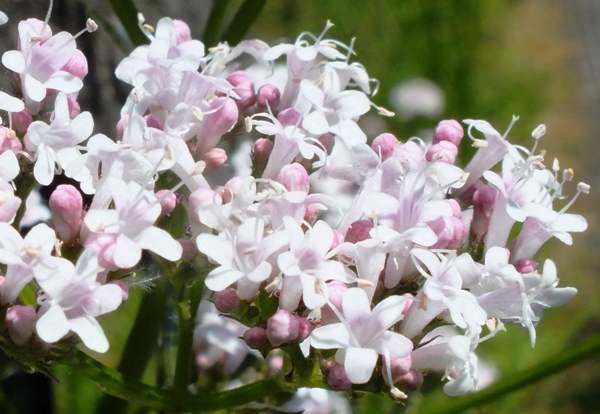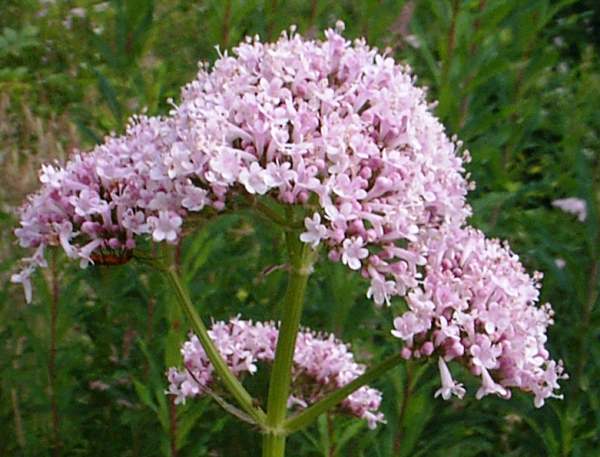Trees Birds Mammals Fish Amphibians Reptiles
Wild Algarve
Bookshop
Valeriana dioica - Marsh Valerian
Phylum: Magnoliophyta - Class: Equisetopsida - Order: Dipsacales - Family: Caprifoliaceae

The flower heads may look rather like umbellifers, but Marsh Valerian is more closely related to the Teasel than to Wild Carrot, Hogweed and the other common members of the family Apiaceae.

Description
Valeriana dioica is a stoloniferous perennial and grows to typically 50cm tall, but exceptionally to twice that height - typically about half the height of Common Valerian, producing tight clusters of pink five-petalled flowers, the petals joined at the base. Flowers are dioecious (male and female on separate plants, with male flowers typically 4.5mm across and female flowers about 3mm across. The shiny basal leaves are oval and unnotched, while the stem leaves are pinnately lobed, mostly unstalked and with a variable number of narrow lateral lobes in opposite pairs.

Distribution
This plant is widespread throughout the southern part of the UK but absent from the far north of Scotland and also from Ireland. It is also found in many northern and central European countries.

Habitat
Permanently wet alkaline or only slightly acidic land such as fens and bogs is the favoured habitat of Marsh Valerian, which is a common waterside plant. Marsh Valerian is easily distinguished from the very pale pink roadside wildflower Common Valerian Valeriana officinalis by its shorter and stockier stature, tighter flower clusters, the deeper pink colour of the flowers, and its oval basal leaves.
Blooming Times
In Britain and Ireland Marsh Valerian blooms from early April until the end of June. The pictures shown on this page were taken at Cors Goch, on Anglesey, in mid June.
Etymology
The generic botanical name Valeriana comes from the Latin verb valere, meaning 'to be healthy'.
Plants with the name dioica (literally meaning 'two houses') have both male and female flowers on separate plants. The male flowers of Marsh Valerian are about twice the size of the tiny female ones.
Uses
Sleeping potions known as Valerian were derived from this and other plants from the same genus; they were used not only as a treatment for insomnia but also reputedly by thieves who spiked the drinks of intended victims. Valerian is still used as the source of sedatives for relaxing the central nervous system.
Similar Species
Marsh Valerian is easily distinguished from Common Valerian Valeriana officinalis, which grows much taller and has looser flower clusters and paler pink flowers, all much the same size, whereas Marsh Valerian is dioecious and has tiny female flowers on separate plants from the larger male flowers.
Sue Parker's latest ebook is a revised and enlarged edition of Wild Orchids in The Burren. Full details here...
Buy it for just £5.95 on Amazon...
Sue Parker's new ebook is a comprehensive and fully revised edition of her acclaimed field guide to the Wild Orchids of Wales. Full details here...
Buy it for just £5.95 on Amazon...
Please Help Us: If you have found this information interesting and useful, please consider helping to keep First Nature online by making a small donation towards the web hosting and internet costs.
Any donations over and above the essential running costs will help support the conservation work of Plantlife, the Rivers Trust and charitable botanic gardens - as do author royalties and publisher proceeds from books by Pat and Sue.